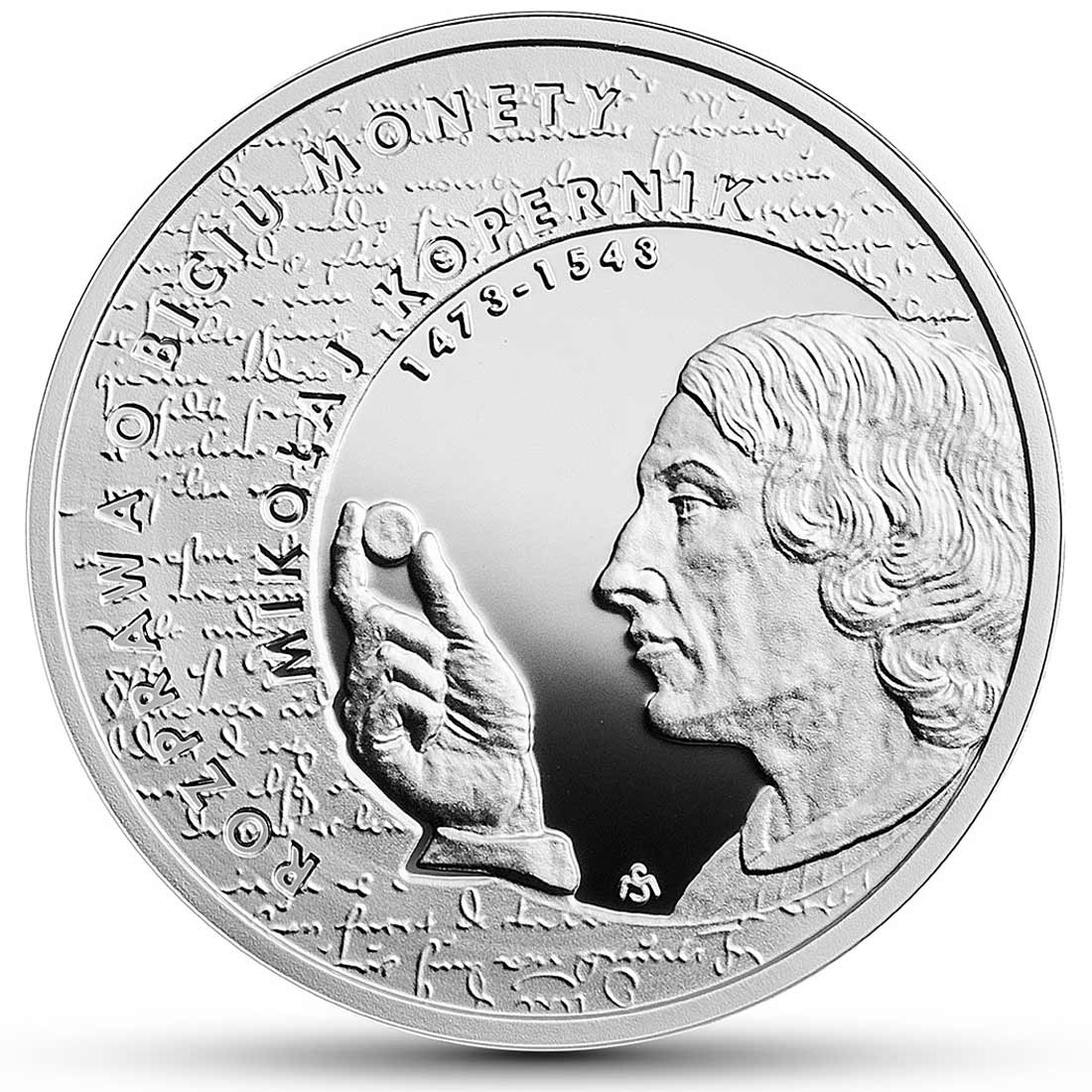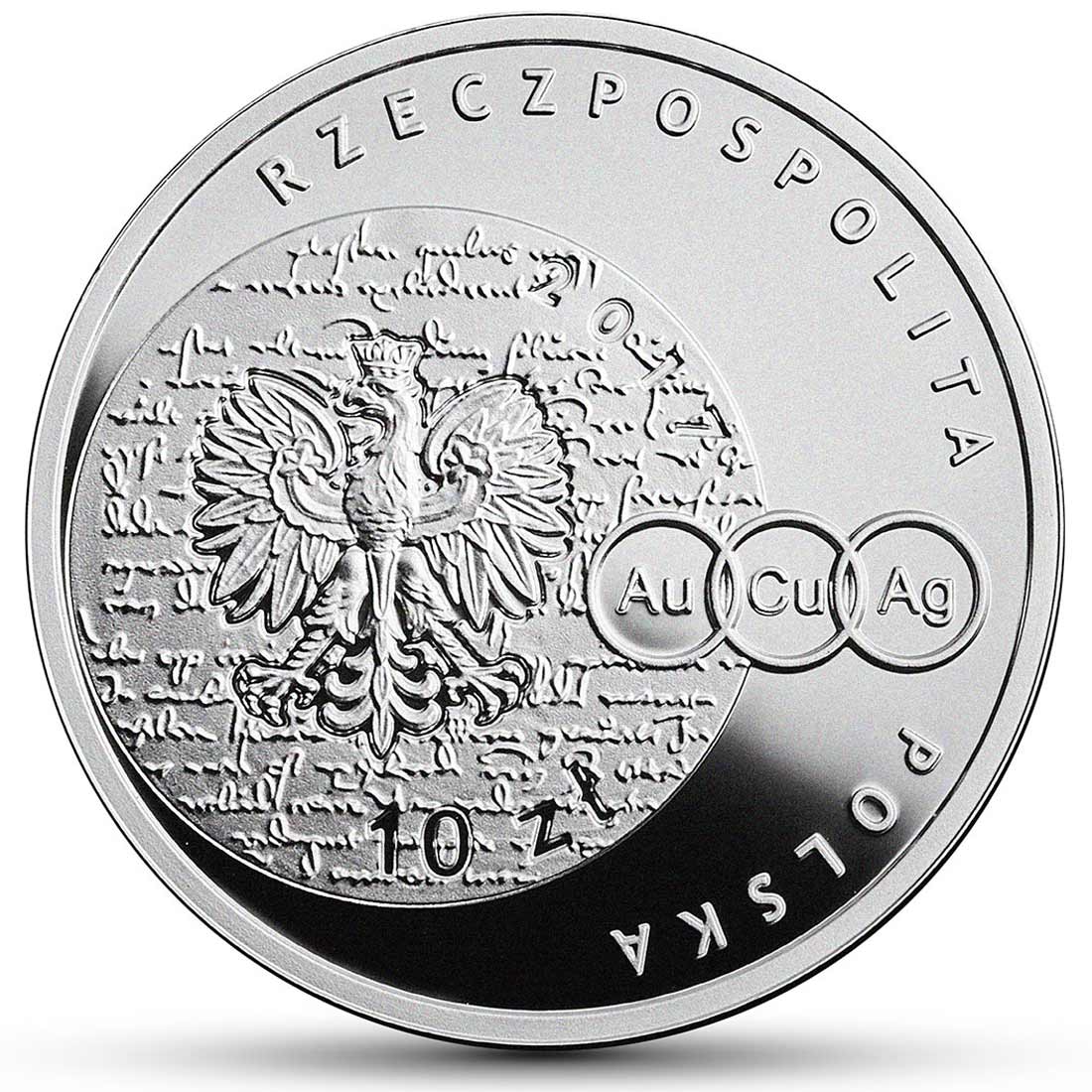Copernicus, a giant of science, is commemorated for his economic achievements on Poland’s latest coin
Polish state bank, Narodowy Bank Polski, has inaugurated a new series of proof sterling silver coins celebrating The Great Polish Economists. While on the surface it isn’t a particularly gripping theme, we were pleasantly surprised by the subject of the first coin, the giant of European Renaissance scientific thinking, Nicolaus Copernicus. As with most NBP releases, they provide a superb back story to the coin which we’ve reproduced below, so straight on to the coin.
Cleanly struck in half a standard ounce of sterling 0.925 silver, the coin is free of any modifications like colouring or gilding. The reverse face depicts a portrait of Copernicus holding a coin, against a background that reproduces a fragment of the manuscript, “Treatise On the Minting of Coin”. Inscribed are his name and the dates of his life, and the text ‘ROZPRAWA O BICIU MONETY’ (Treatise On the Minting of Coin). A small SM mintmark denotes it as the work of designer Sebastien Mikolajczak.
The obverse carries the cool looking Eagle state emblem of Poland along with the usual ‘Rzeczpospolita Polska’ (Republic of Poland) inscription, and the denomination (10 zl). Another fragment of the treatise, currently housed in the collection of the national Museum in Krakow – The Czartoryski Museum, is reproduced as a background to the state emblem.
The coin comes in a standard small grey box along with a certificate of authenticity and will ship from the 24th April. We’ve always had a bit of a soft spot for the NBP’s output and this is no exception. The last of their coins we obtained was the beautiful paratrooper coin from last year and they’re very well struck by the Mennica Polska, better known to collectors as the Mint of Poland.
MINTS DESCRIPTION
Nicolaus Copernicus (1473–1543) is primarily known as an exceptional astronomer who formulated the true model of the solar system, which led to an unprecedented change in the human perception of Earth’s place in the universe. This great Pole, who is rightly included among the greatest minds of the European Renaissance, was also a clergyman, a mathematician, a physician, a lawyer and a translator. He also proved himself as an effective strategist and military commander, leading the defence of Olsztyn during the Polish–Teutonic War. Later on, he exhibited great organizational skills, quickly rebuilding and relaunching the economy of the areas devastated by the invasion of the Teutonic Knights. He also served in diplomacy and participated in the works of the Polish Sejm.
Copernicus’ scientific achievements in the field of economics were equally signifcant, and place him among the greatest authors of the world economic thought. In 1517 Copernicus wrote a treatise on the phenomenon of bad money driving out good money. He noted that the“debasement of coin” was one of the main reasons for the collapse of states. He was therefore one of the frst advocates of modern monetary policy based on the unifcation of the currency in circulation, constant care for its value and the prevention of inflation, which ruins the economy. In money he distinguished the ore value (valor) and the estimated value (estimatio), determined by the issuer. According to Copernicus, the ore value of a good coin should correspond to its estimated value. This was not synonymous, however, with the reduction of the coin to a piece of metal being the subject of trade in goods. The ore contained in the money was supposed to be the guarantee of its price, and the value of the legal tender was assigned to it by special symbols proving its relationship with a given country and ruler.
Although such views are nothing new today, in his time they constituted a milestone in the development of economic thought. Additionally Copernicus was not only a theorist of finance, but he was also the co-author of a successful monetary reform, later also implemented in other countries. It was Copernicus, the frst of the great Polish economists, who in 1519 proposed to King Sigismund I the Old to unify the monetary system of the Polish Crown with that of its subordinate Royal Prussia.
The principles described in the treatise published in 1517 were decades later repeated by the English fnancier Thomas Gresham and are currently most often referred to around the world as Gresham’s law. Historical truth, however, requires us to restore the authorship of this principle to its creator, for example through the popularization of knowledge about the Copernicus-Gresham Law. Artur Adamski
SPECIFICATION
| NAME | 2017 THE GREAT POLISH ECONOMISTS |
| DENOMINATION | 10 Zloty |
| COMPOSITION | 0.925 silver |
| WEIGHT | 14.14 grams |
| DIAMETER | 32.00 mm |
| FINISH | Proof |
| MODIFICATIONS | None |
| MINTAGE | 15,000 |
| BOX / COA | Yes / Yes |





Leave A Comment